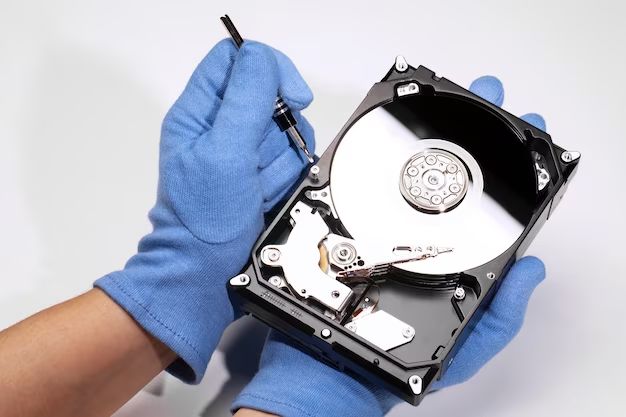Quick Answers
Yes, with some patience and the right tools, most people can install a new hard drive themselves. The process involves physically connecting the drive, partitioning and formatting it, and installing the operating system and drivers. However, it’s a complex process with some risks, so consider your tech skills before attempting it.
Is Installing a Hard Drive Difficult?
Installing a hard drive isn’t extremely difficult, but it does involve multiple steps and requires working carefully inside your computer. You’ll need to:
- Physically connect the new drive with cables inside your PC case
- Partition and format the drive so your PC recognizes it
- Install your operating system and device drivers
- Mount the drive so you can access it
- Transfer files and programs to the new drive
If you’re comfortable working inside your computer, connecting cables, and configuring settings in your BIOS and OS, you can likely handle installing a hard drive. But if you don’t have much technical experience, the process could be frustrating.
What Tools Do I Need?
To install a hard drive yourself, you’ll need:
- A new 3.5″ or 2.5″ internal hard drive
- An open drive bay in your computer case (for 3.5″ drives)
- SATA data and power cables
- A Phillips screwdriver
- An external drive enclosure (if your new drive is larger than your current one)
- Partitioning and cloning software
You may also need cable adapters if your new drive uses a different connector than your motherboard. Anti-static precautions are also a good idea when handling computer components.
Step-By-Step Hard Drive Installation
Follow these steps to install a new hard drive in your desktop or laptop:
- Back up any important data on your current drive.
- Power down your computer and unplug it.
- Open the PC case and locate an empty drive bay.
- Secure the new drive in the drive bay with screws.
- Attach the SATA data and power cables to the drive.
- Replace the PC case and reconnect power.
- Boot into the BIOS setup utility.
- Verify the new drive is detected.
- Partition and format the new drive.
- Install your OS and device drivers.
- Mount the drive and transfer files.
Take precautions against static discharge when handling components, work carefully when connecting small cables, and refer to your motherboard manual if needed.
Initializing and Partitioning the New Drive
Once connected, the new drive will need to be initialized (MBR or GPT), partitioned, and formatted before you can use it. This is done through Disk Management in Windows or Disk Utility on Mac. The process partitions the drive into sections and formats each partition with a file system, such as NTFS or HFS+.
Most hard drives come uninitialized and unformatted out of the box. Initialization configures the drive to be recognized by your PC’s BIOS and OS.
Installing Your Operating System
With the drive connected and partitioned, you can install your operating system if needed. For Windows, insert your installation media, boot into the installer, and select your new drive. The OS files will install onto the new blank drive.
On Mac, you can use Disk Utility’s “Restore” feature to clone your original OS partition to the new drive before swapping them. Alternatively, use migration tools to transfer your OS, applications, and files after installation.
Don’t forget to install your chipset, SATA, and other drivers after installing the OS to ensure proper operation.
Transferring Your Data and Programs
Once the OS is installed, you can migrate your apps, settings, and data to the new drive. On Windows, use the migration tools built into the OS installer. On Mac, use Migration Assistant.
For files, use software like Carbon Copy Cloner (Mac) or Macrium Reflect (Windows) to clone your original drive contents over to the new drive. Take care not to overwrite your OS on the new drive.
After migration, double check that all your data and programs function properly on the new hard drive before retiring your old one.
Tips for Hard Drive Installation
Follow these tips for a smooth installation:
- Use an external drive enclosure to clone your old drive if needed.
- Consult your motherboard manual for SATA port locations.
- Organize your cables for good airflow and aesthetics.
- Initialize your drive before partitioning.
- Double check connections before booting up.
- Verify your OS migration in Disk Management.
Conclusion
Installing a hard drive yourself can save money compared to replacement by a tech, but isn’t for everyone. If you’re comfortable working inside your PC and navigating OS environments, carefully follow the steps above to connect, partition, format, clone, and migrate data to your new drive. Take it slow, double check connections, and refer to manuals as needed. With some patience and care, you can avoid technical headaches down the road.
